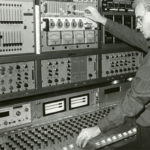Leading up to this live diffusion, I think it might be a good idea to throw some basic definitions out there. It may help in establishing context about what this music is, and also shed some light on my suggestions on how to listen to it which I may touch on at the event.
Here is a paper from 2022 by Natasha Barrett. Barrett is one of the leading lights in the Acousmatic space today and she’s very high on the list of pesonal favorite artists in any musical genre. Here, she does a great job at presenting some of the basic jargon (and believe me, this music is jargon heavy) and breaking it down into very easy to understand bite sized nuggets.
The paper is not that long but I’m going to quote some of the parts that may be relevant to people not familiar with this music. All bolding and caps are mine.
To quote Schaeffer, “by deliberately ignoring any references to instrumental causes or pre-existing musical meanings, we seek to give ourselves over entirely to listening, and so to come across those instinctive pathways that lead from pure ‘sound’ to pure ‘music’ […] turning our backs on the instrument and musical conditioning, and placing sound and its musical potential squarely before us.”
Musique Concrète
Musique Concrète was a term given by Pierre Schaeffer around 1948 to a method of working that starts with concrete sound material (i.e. sound recordings, normally of non-instrumental sounds), and then sought to abstract musical values from it. Musique Concrète describes a reversal of the way musical work is done. Instead of notating musical ideas using the symbols of music theory (where the composer creates the abstract score), leaving it to known instruments and known performance techniques to realise the score (which leads to concrete listening in the performance), the aim was to gather sound, and abstract the musical values it potentially contained. The composer perceives every detail that constitutes the sound, from which musical structure and an abstract discourse are then derived
Acousmatic
In musical terms, simply put, acousmatic describes the process of listening and composing with sounds removed from their visual causation. In practice it means much more: the acousmatic approach to listening and composing is not as straightforward as simply using recorded sources (which was one of the issues Schaeffer had with the term ‘concrète’), and to quote Schaeffer, “by deliberately ignoring any references to instrumental causes or pre-existing musical meanings, we seek to give ourselves over entirely to listening, and so to come across those instinctive pathways that lead from pure ‘sound’ to pure ‘music’… turning our backs on the instrument and musical conditioning, and placing sound and its musical potential squarely before us.”
… and finally…
Reduced listening
In reduced listening we listen to the sound for its intrinsic information by ignoring its real or supposed source, or the meaning that the source may convey. Reduced listening refers to the notion of the phenomenological reduction called Époché (suspension of judgement), or bracketing out the sound from its real-world context. To quote Schaeffer, “The acousmatic situation first disconnects the audio-visual context, but above all it makes possible, but not compulsory, to explore the sound in itself […]. We must emphasise the fact that this type of interest does not follow automatically from simply being disconnected from the audio-visual complex but from a specific INTENTION on the part of the listener.” Here I have italicised to emphasise what is often misunderstood. In other words, we are not putting the existence of the external world in doubt. The point is to keep oneself in a state of freedom, which is particularly important because it means as composers we can still access the other modes of listening if we wish. Yet for normal listeners, reduced listening is difficult! It requires a listening focus that is unnatural compared to how we engage with the sounding world around us, and is normally attained by repeated listening to small sections of sound. Yet in composition it is a useful way to explore the musicality of real-world sounds and reveal qualities that can then be emphasised through sound manipulation. It is not necessary to engage in reduced listening while enjoying the final work.
I’ll continue this thread with my personal reasons for attempting to listen to this music in the way’s suggested above.
